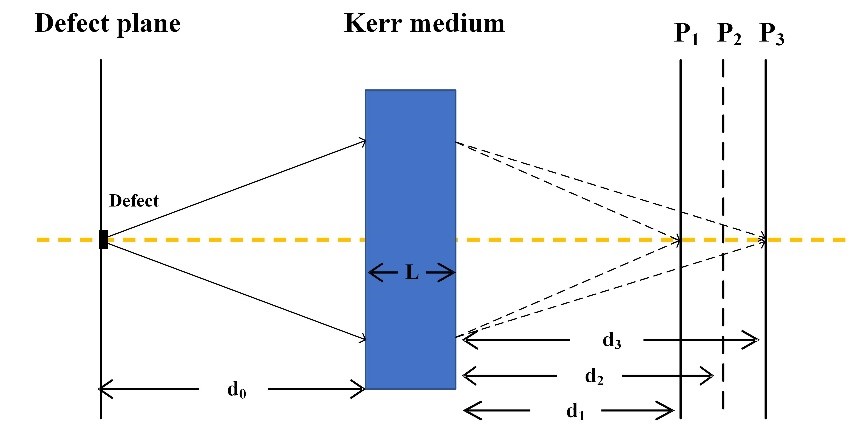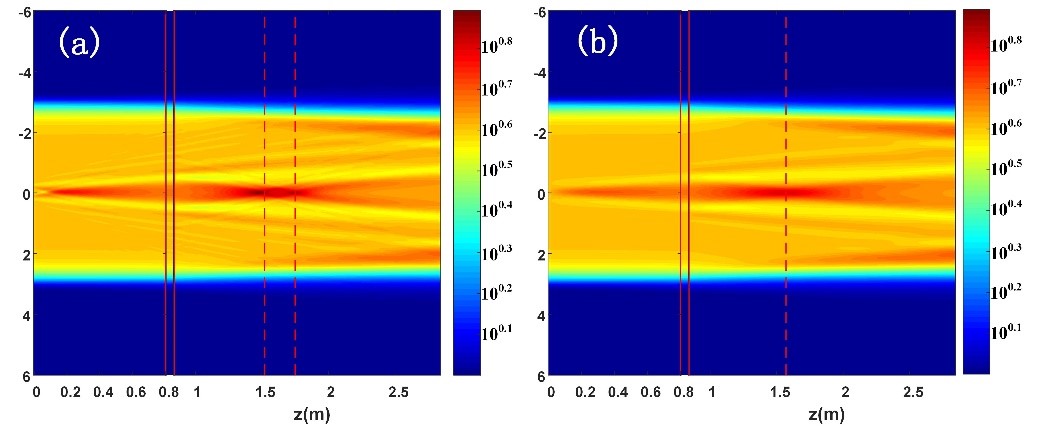Recently, researchers from Shanghai Institute of Optics and Fine Mechanics, Chinese Academy of Sciences (SIOM, CAS), have discovered a new phenomenon of multi-peak hot image phenomenon with a close dependence on the defect edge, and explored the mechanism behind it and the critical conditions for the formation of multi-peak. The findings were published in Optics Express on 6 August.
Hot image is a kind of light intensification caused by nonlinear self-focusing effect. Its peak intensity can reach several times to dozens of times of the average light intensity, which is a key factor limiting the output capability of high-power laser.
Previous hot image studies have shown that a single defect can generate a hot image on the conjugate plane downstream of nonlinear medium, and under the condition of multiple defects or cascading nonlinear medium, multi-peak hot images on the axis may even occur. The position distribution of the hot image and the intensification of the optical field are important basis for the safety design of the laser system, so the prediction and avoidance of the hot image in the system chain are of great significance.
The research team found that even under the action of a single nonlinear medium, a single defect could generate two hot image peaks under certain conditions, and the ability to generate two peaks structure and peak strength showed a strong dependence on the steepness of defect edge. The Super-Gaussian model is used to simulate the steepness of the edge of the defect. The simulation results show that the hard edge diffraction is the main cause of the formation of the double peak hot images, and the critical condition of the formation of the double peak hot image is also given.
The discovery of the double peak hot image induced by a single defect has a profound impact, because the intensity of the double peak is sufficient to cause optical element damage, and the existence of the second peak behind the conjugate plane is a neglected potential threat.
This work provides a new dimension for the study of nonlinear hot image, and the research results have important guiding significance for the defect evaluation, system layout design and load capacity enhancement of final optics assembly in high-power laser systems.
This work is supported by National Natural Science Foundation of China, Natural Science Foundation of Shanghai, Youth Innovation Promotion Association of the Chinese Academy of Sciences and The Strategic Priority Research Program of Chinese Academy of Sciences.

Fig. 1. The optical path model. P1 represents the plane of first hot image peak. P2 represents the conjugated plane. P3 represents the plane of second hot image peak. (Image by SIOM)

Fig. 2. The top-view images of the evolution of the transversal beam intensity distribution with the propagation distance for the 200 μm defect and 0.1π modulation depth. The common logarithm of the intensity is taken. (a) The third order super-Gaussian defect. (b) Gaussian defect (Image by SIOM)
Article website:
https://www.osapublishing.org/oe/abstract.cfm?uri=oe-28-17-25591
Contact:
Mr. Wu Xiufeng
General Administrative Office
Shanghai Institute of Optics and Fine Mechanics, CAS
Email: xfwu@siom.ac.cn